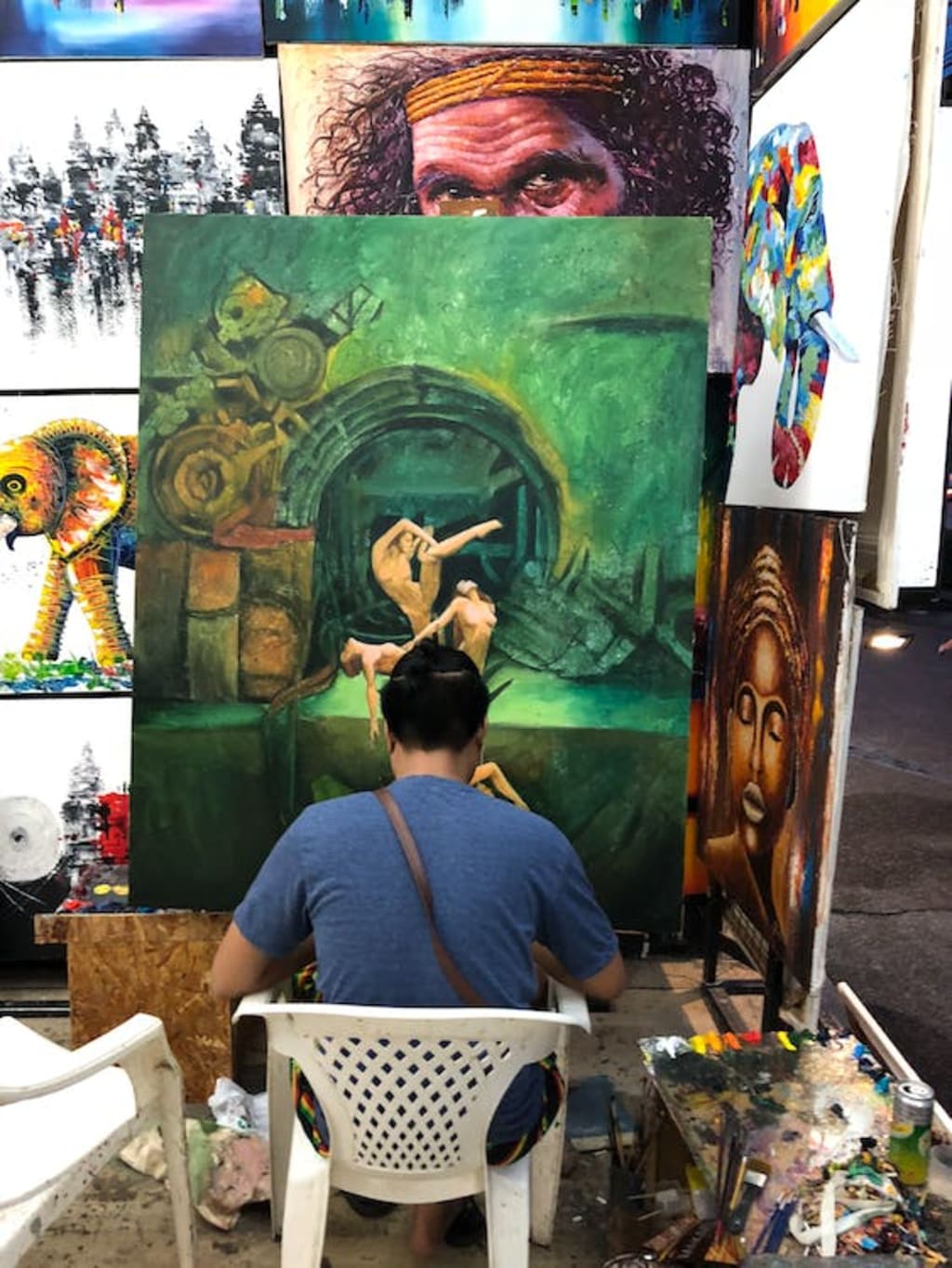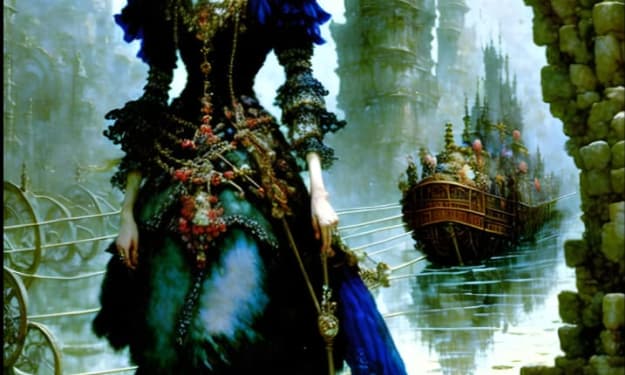Power of Colors
Exploring the Palette of Emotions in PaintingThe

Introduction:
Painting is a vibrant and expressive form of artistic creation that has captivated humanity for centuries. Through a skillful combination of colors, brushstrokes, and composition, artists have the ability to convey emotions, evoke memories, and inspire profound connections with their viewers. In this article, we will delve into the fascinating world of painting, exploring the techniques, inspiration, and profound impact of color choices in creating powerful works of art.
The Language of Colors:
Colors play a pivotal role in painting, as they have the power to communicate emotions and convey meaning. We'll explore the significance of different colors and their psychological effects, such as the warmth of red, the tranquility of blue, and the energy of yellow. We'll discuss how artists strategically utilize color palettes to evoke specific moods or atmospheres in their artworks.
Brushstrokes and Textures:
Beyond color, the technique of applying paint to the canvas also contributes to the overall impact of a painting. We'll explore various brushstroke techniques, such as impasto, glazing, or stippling, and discuss how they can add depth, movement, and texture to the artwork. Through examples of renowned artists, we'll showcase the diverse ways in which brushwork can enhance the storytelling within a painting.
Drawing Inspiration:
Inspiration is a driving force for artists, and we'll dive into the different sources that ignite their creative spark. We'll explore how nature, personal experiences, cultural influences, and even other artists' works can inspire painters to create unique and innovative pieces. We'll discuss the importance of observation, imagination, and experimentation in the creative process.
Masters of the Craft:
In this section, we'll profile influential artists whose works have left an indelible mark on the world of painting. From the luminous landscapes of Claude Monet to the abstract expressions of Wassily Kandinsky, we'll explore the unique styles, techniques, and contributions of these visionary painters. Through their stories, we'll gain insight into their artistic journeys and the impact they made on the art world.
Painting as Self-Expression:
Painting offers a powerful means of self-expression, allowing artists to communicate their thoughts, emotions, and perspectives in a visual language. We'll discuss how artists use their work to convey personal narratives, explore societal issues, or challenge traditional norms. We'll explore the role of symbolism and metaphor in painting, examining how artists infuse their artworks with deeper layers of meaning.
Let us explore some economic importance in various aspects:
- Art Market: The art market is a thriving industry, and painting plays a central role in it. Paintings by renowned artists can fetch astronomical prices at auctions and private sales. The sales of high-value paintings contribute to the overall economy by generating substantial revenue and stimulating economic activity.
- Employment and Artistic Careers: The field of painting provides employment opportunities for a wide range of professionals, including artists, art dealers, curators, gallery owners, art appraisers, art conservators, and art educators. These individuals contribute to the economy by earning income and spending it on various goods and services.
- Cultural Tourism: Paintings, especially those housed in museums and art galleries, attract a significant number of tourists. Visitors often travel to specific destinations to view famous artworks, which leads to increased tourism revenue, hotel bookings, dining, transportation, and shopping. The economic benefits from cultural tourism extend to local businesses and communities.
- Art Education: Art schools and institutions offer painting programs and courses, generating revenue through tuition fees and attracting students from around the world. Art education contributes to the development of creative skills, critical thinking, and cultural appreciation, fostering a diverse and vibrant workforce in various creative industries.
- Art Auction Houses and Galleries: Auction houses and galleries specializing in paintings facilitate the buying and selling of artworks. These businesses earn commissions or profits from sales transactions, and their operations stimulate economic activity through exhibitions, events, and the support of associated industries such as logistics, insurance, and marketing.
- Art Materials and Supplies: The production and sale of art materials and supplies, including paints, brushes, canvases, and framing materials, contribute to the economy. Artists and hobbyists purchase these materials regularly, supporting manufacturers, retailers, and distributors in the art supply industry.
- Art Restoration and Conservation: The restoration and conservation of paintings are crucial to preserving cultural heritage. These specialized services provide employment for conservators, technicians, and researchers. The demand for restoration and conservation work helps sustain a niche market and supports associated industries, such as scientific analysis, documentation, and archival services.
- Public and Corporate Collections: Public institutions, such as museums, galleries, and government buildings, often acquire and display paintings as part of their collections. Corporations also invest in art for aesthetic purposes and as a form of asset diversification. The acquisition of paintings contributes to the economy, while also enhancing public spaces and fostering cultural appreciation.
Overall, the economic importance of painting is multifaceted, encompassing the art market, employment opportunities, tourism, education, creative industries, supply chains, and the preservation of cultural heritage.
Conclusion:
Painting is a testament to the limitless possibilities of human creativity and imagination. Through the interplay of colors, brushstrokes, and artistic expression, painters have the ability to capture the essence of emotions, tell stories, and ignite profound connections with their viewers. By understanding the techniques, drawing inspiration from various sources, and appreciating the works of influential artists, we can deepen our appreciation for the power of painting as a transformative art form.
About the Creator
FELIX Olikagu
Captivating storyteller and compassionate wordsmith. Join me on a journey through the power of words, as we explore diverse topics with depth, creativity as it concerns Health issues, Environment, Emotions, and a touch of magic. Explore!
Enjoyed the story? Support the Creator.
Subscribe for free to receive all their stories in your feed. You could also pledge your support or give them a one-off tip, letting them know you appreciate their work.






Comments
There are no comments for this story
Be the first to respond and start the conversation.